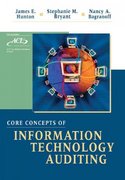Question
1) A Brooklyn developer wants to turn an industrial warehouse into a multi-unit residential condominium, seven blocks from the entry to the L subway line.
1) A Brooklyn developer wants to turn an industrial warehouse into a multi-unit residential condominium, seven blocks from the entry to the L subway line. In front of the entry to the subway is a deli, and a Subway Sandwich Shoppe. In order get his condo plan approved, the developer submits his plan to which Legal Entity?
a) Real Estate Board of NY (or RBNY) b) The Federal Economic Department (or FED) c) The Department of Housing and Urban Development (or HUD) (d) NYS Attorney General
2) The famous master builder in NYC during the 20th Century was Robert Moses. His power was originally derived from:
A) His ability to build important public works projects that were seen favorably by the voters, voters who elected the public officials that kept Moses in office. B) He began building in North Carolina, which depended on extensive highways. C) When initially confronted with NIMBY protestors, he used legal means to stop protestors, and allowed protestors to gather in Albany. D) To protect his reputation, he kept the promise to collect toll road fees until such time that the project fees were covered by the tolls.
3) The Internal Rate of Return for a project:
a) Solves for the interest rate that makes the net present value zero. b) Is a special case of the net present value method. c) Accepts or rejects a project based on a comparison of the IRR with the cost of capital of the project d) All of the above answers are correct.
4) When delivering environmentally efficient buildings, key criteria to consider include all of the following, EXCEPT:
A) Additional insulation to prevent energy loss B) Use of special windows which have a high R value C) Continuous air sealing, to stop air flow from entering the space. D) Mitigation of audio transmission, to insure personal comfort. E) Increased comfort: Low temperature deltas between the areas near windows and areas near appliances.
5) Thermal Bridging, as discussed in class, needs to be considered when building green properties. This concept is supported by all of the following, EXCEPT:
A) Acts like a spoon in a cup of hot coffee: energy transfers across metal connections. B) Allows for automobiles/personnel to cross over bodies of water that get chilled by the oceanic air that is often cold. C) Needs to be prevented in order to not tax the modest heating systems incorporated into energy efficient spaces. D) One of the key design issues that help preserve energy efficiencies in overall building design.
6) For Passive House Projects, which of the following is true:
A) This style of construction is not recommended for large properties. B) Due to the nature of the equipment required, Passive House construction projects are often twice the cost of standard construction projects. C) Bamboo, as a quick replacement material, is often incorporated into green style construction D) Incorporating this type of construction can achieve a large % reduction in the energy use requirements for the project, and thereby save money and save the planet at the same time.
7) Air Rights: Select the one item that is true:
A) Air rights can be aggregated across boroughs. B) Air rights can be transferred to properties that have 7 feet of common property lines, without having to use additional 3rd party owner involvement. C) Due to the high value of their use, air rights are generally sold at a 2x factor over standard pricing levels. D) Air oversight is reviewed the Department of Air and Trusses (DAT) E) None of the above
8) Sky Exposure Plane: Select the one item that is true:
A) Used in zoning regulations to allow the viewing of local airplane traffic. B) The plane is often set at a 90 degree angle from the sea-level horizontal. C) When used with Height Factor limitations, can dictate how buildings are set back with a wedding cake formation, off of a large base extending across the propertys lot dimensions. D) If implemented incorrectly, can prevent minor outdoor balconies that limit the size and quantity of party attendants on the buildings roof.
9) The agency that often oversees how roof parapets, bulkheads and extensions impact historical buildings and dictate what can be built on a roof is:
A) Landmarks Commission B) DOB C) DHCR D) HUD
10) Most Air-Rights across the city go unused. All are viable reasons why this occurs, EXCEPT:
A) Grandfathering of spaces of what was built previously B) Living in Peace: Current tenants have rights which include continuous building services and the right to live in limited noise and dirt environments. C) Physical Issues: Developers have difficulties in adding space above current occupants. D) Financial: the cost of building them out must be less than the amount of funds that can be received by selling the final finished spaces.
11) Bulkheads extend users access to the roof: Which about these building features is FALSE:
A) You are not allowed to stand on or walk on top of Bulkheads B) Bulkheads can extend through the sky exposure plane C) Bulkheads can contain mechanical equipment and water tanks D) Bulkheads can provide roof access from interior stairwells. E) Often, their SqFt does not count towards FAR
Step by Step Solution
There are 3 Steps involved in it
Step: 1

Get Instant Access to Expert-Tailored Solutions
See step-by-step solutions with expert insights and AI powered tools for academic success
Step: 2

Step: 3

Ace Your Homework with AI
Get the answers you need in no time with our AI-driven, step-by-step assistance
Get Started


